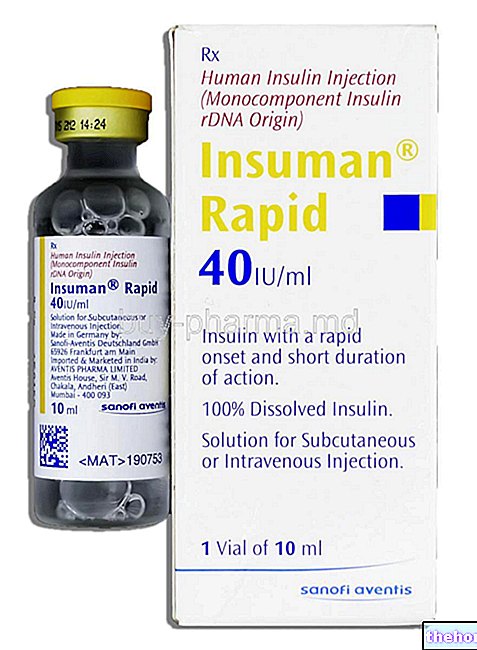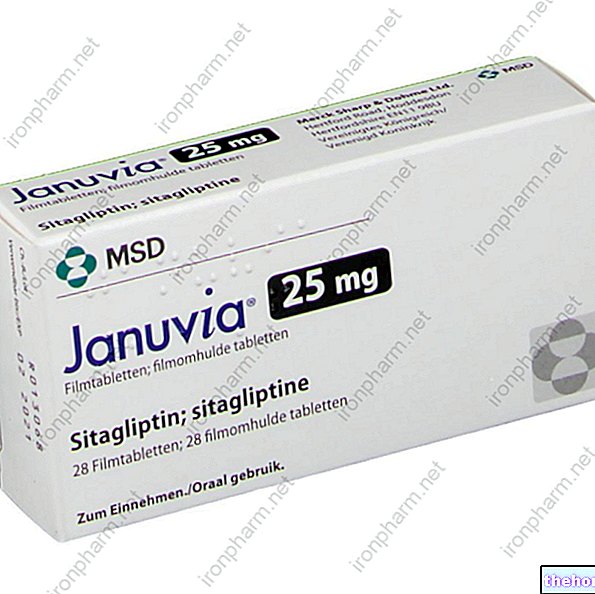
What is Actrapid?
Actrapid is a solution for injection. It is available in ampoules, cartridges (PenFill) or pre-filled pens (NovoLet, FlexPen or InnoLet). The active substance in Actrapid is human insulin (rDNA).
What is Actrapid used for?
Actrapid is indicated in patients with diabetes.
The medicine can only be obtained with a prescription.
How is Actrapid used?
Actrapid is given subcutaneously (under the skin) by injection, usually in the abdominal wall (belly). You can also use the thigh, the deltoid region (shoulder) or that of the buttocks (buttocks). The patient's blood glucose (sugar) level should be checked regularly to find the lowest effective dose. The usual dose varies between 0.3 and 1.0 international units (IU) per kilogram of body weight per day. Actrapid is given 30 minutes before a meal. Actrapid is a fast-acting insulin and can be used with long-acting insulins. It can be given intravenously (into a vein), but only by a doctor or nurse.
How does Actrapid work?
Diabetes is a disease in which the body does not produce enough insulin to control the level of glucose in the blood.Actrapid is a replacement insulin identical to the insulin produced by the pancreas. The active substance in Actrapid, human insulin (rDNA), is produced by a method known as a 'recombinant technique': the insulin comes from a yeast that has received a gene (DNA), which makes it able to produce it. . Replacement insulin acts like naturally produced insulin and helps glucose enter cells from the blood. By controlling the blood glucose level, the symptoms and complications of diabetes are reduced.
How has Actrapid been studied?
Actrapid has been studied in patients with type 1 diabetes, in which the pancreas is unable to produce insulin (two studies involving 1954 patients) as well as in type 2 diabetes, in which the body is unable to use the "insulin effectively (a study involving 182 patients). The studies compared Actrapid with a human insulin analog (insulin aspart) by measuring the level of a substance present in the blood, called glycosylated hemoglobin (HbA1c), over the course of six months, which indicates the effectiveness of the blood glucose level.
What benefit has Actrapid shown during the studies?
HbA1c levels remained fairly stable over the six months of Actrapid treatment.
What is the risk associated with Actrapid?
As is the case with all insulins, Actrapid can cause hypoglycaemia (a low level of glucose in the blood). For the full list of side effects reported with Actrapid, see the package leaflet.
Actrapid should not be used in patients who may be allergic to human insulin (rDNA) or any of the other ingredients. Actrapid doses should be adjusted when given with a number of other medicines which may affect the blood glucose level. For the full list of restrictions on use, see the Package Leaflet.
Why has Actrapid been approved?
The Committee for Medicinal Products for Human Use (CHMP) considered that Actrapid's benefits are greater than its risks for the treatment of diabetes mellitus. The committee therefore recommended the granting of a marketing authorization for Actrapid.
Other information about Actrapid:
On 7 October 2002, the European Commission granted Novo Nordisk A / S a "Marketing Authorization" for Actrapid, valid throughout the European Union. The "Marketing Authorization" was renewed on 7 October 2007.
For the complete version of the Actrapid EPAR click here.
Last update of this summary: 10-2007
The information on Actrapid - insulin published on this page may be out of date or incomplete. For a correct use of this information, see the Disclaimer and useful information page.




























